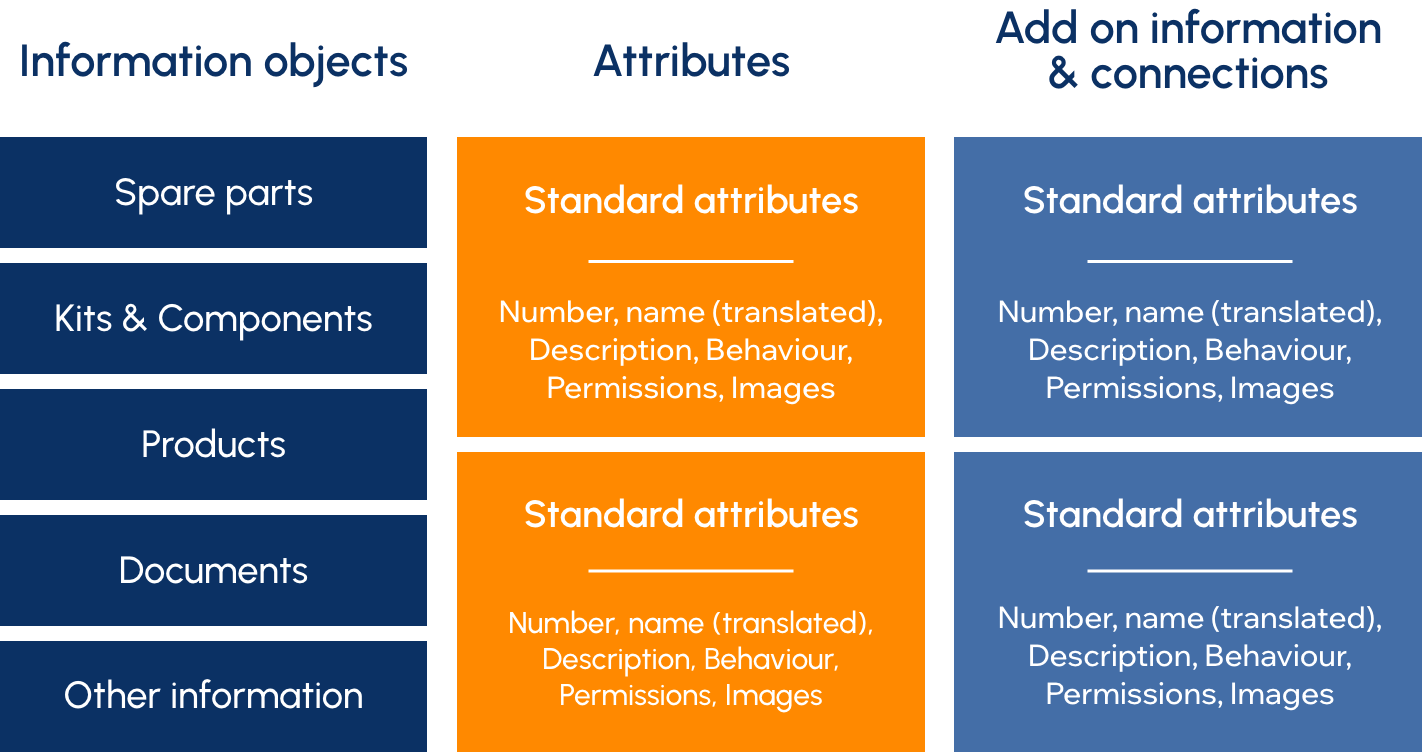Product Information Management for
an Efficient Aftermarket
Breaking Down Content Silos with Case-Based Workflow

What is an Aftermarket PIM
Aftermarket PIM manages the needs of aftermarket sales and services, whereas a classic PIM focuses on finished goods. Aftermarket data management and its complexities related to spare parts, aftermarket sales and service information are managed using a streamlined Aftermarket PIM system
This specialised and efficient aftermarket PIM consolidates aftermarket data from various sources into a unified repository, including spare parts catalogue, exploded views, service bulletins, and catalogue documentation.
It facilitates creating, managing, and distributing spare parts catalogues, service kits, replacement chains, and other aftermarket-related content.
This assures field teams and customers of the most accurate and up-to-date product information on aftermarket sales, services and eCommerce.
Say goodbye to information overload and get personalised aftermarket content with Signifikant's innovative approach.
When Would You Need Signifikant’s PIM System?
You would benefit from Signifikant’s PIM system when:
- You sell complex machinery or products with long lifecycles that require ongoing support.
- Spare parts and service information are spread across multiple systems or file formats.
- Technicians and customers struggle to find the right information or parts.
- Product documentation is out of date or inconsistent across departments or channels.
- You want to automate catalogue creation and improve aftermarket eCommerce capabilities.
- You need to deliver role-based, machine-specific content to different users efficiently.
- Your business wants to reduce downtime, improve customer experience, and increase aftermarket revenue.
Signifikant Aftermarket PIM Toolset
Handle legacy parts and their replacements.
Store the connection between the ordered part and the product.
Self registration or other means to connect products to its owner.
Finding the exact right product version.
Keep track of customers products and install base.
Keep track of latest purchases and modifications and ensure they are connected to products or models- user´s products will reappear.
Documentation, manuals, bulletins, support.
Aftermarket specific cross-sales and up-sales strategies.
Serial numbers, products versions and the spare parts, documentation, accessories for that one.
Product Information Management for Aftermarket
In business, efficient task performance depends on relevant information. With large volumes of aftermarket data, companies need to deliver service information based on roles, skills, tasks, and locations.
Signifikant’s three-step approach—consolidation, tagging, and filtering—transforms content silos into case-based workflows, including catalogue integration. It helps deliver personalised aftermarket service and product information, reducing downtime and improving spare parts PIM solution for aftermarket sales and eCommerce.
The Three-Step Approach
STEP 1
Consolidation
Service information is often stored in various tools with different technologies, structures, and terminologies. Signifikant consolidates this aftermarket data into a unified aftermarket database while preserving each tool’s unique features.
This ensures that product information from each tool is imported, mapped, and synchronised regularly to maintain a consistent and up-to-date aftermarket data set for eCommerce.
STEP 2
Tagging
All service information, from small text fragments to complete catalogues or information types, is tagged for multiple purposes. Tags determine the machines for which the catalogue product information is valid, such as serial numbers, production dates, or machine characteristics.
Tags also identify the users for whom the product information is relevant, considering their roles, language preferences, and skill levels,including those involved in eCommerce transactions.
STEP 3
Filtering
Information is filtered to ensure only relevant aftermarket data is delivered to users. Filters apply based on the user’s role, preferred language, skill level, organisation’s partnership type, agreements, subscriptions, customer machines, and tasks. This process delivers precise user service information and eCommerce contexts, reducing the need to search through multiple catalogues or tools.
This process ensures relevant, reliable aftermarket product information reaches users, allowing them to perform tasks efficiently. Signifikant optimises aftermarket data for eCommerce and aftermarket sales, enabling service organisations to manage equipment maintenance and spare parts efficiently while minimising disruptions to business operations.
Contact us for a consultation
Explore the benefits of Signifikant’s product information management system – contact us at info@signifikant.se for a consultation.
Key Terms Explained
- Aftermarket PIM: A Product Information Management system specifically designed to manage the complex data involved in spare parts, service kits, and post-sales support—not just finished goods.
- Exploded Views: Visual diagrams that show the relationship between individual parts in an assembly. Used to help technicians identify components for repair or replacement.
- Case-Based Workflow: A content delivery method where information is structured around specific roles, tasks, or machines, ensuring each user sees only what they need.
- Tagging: Adding metadata to each piece of information (e.g., part number, applicable model, user role) so the system knows when and for whom to display it.
- Filtering: Dynamic logic used to limit the display of content based on the user’s role, language, equipment type, skill level, or other defined criteria.
- Consolidation: The process of gathering and harmonizing data from various systems into a single, structured, and reliable source of truth.
- eCommerce Context: A view of product and service data tailored to online buying behavior, ensuring relevant and updated content is available for spare parts and services.